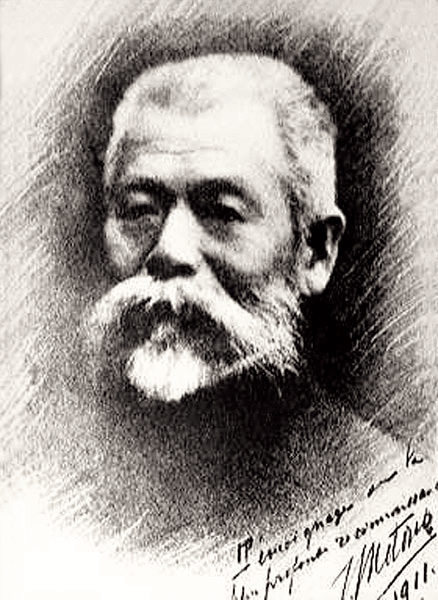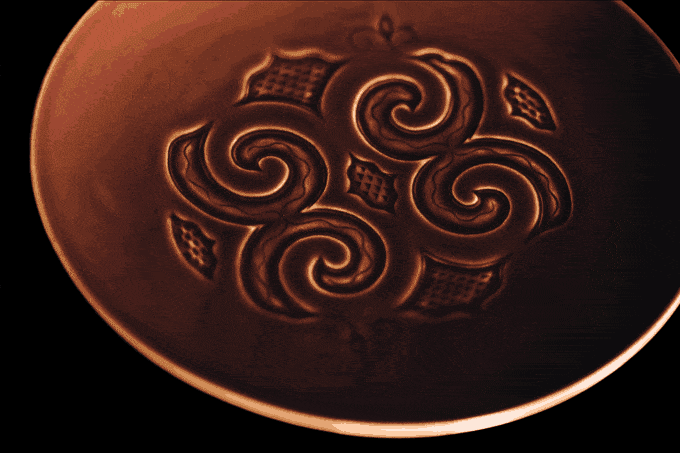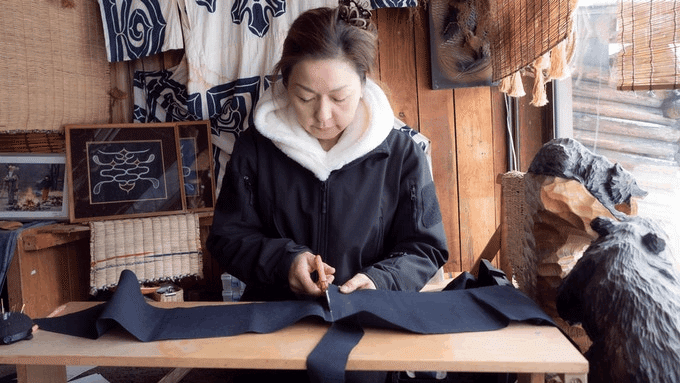
[Project Report]Ainu Meets Arita - Unique Plates Made in Japan

Traditional Japanese Arita porcelain with designs by a group of indigenous artists.
Ainu Meets Arita
This design / traditional craft project is a collaboration between indigenous Ainu artists from Hokkaido, the northernmost of Japan's main islands, and traditional Japanese potteries in the ceramics town of Arita on Kyushu, the southernmost of Japan's main islands.

We have made a collection of unique plates featuring traditional Ainu patterns.
Features of the Plates
The plates are the first-ever collaboration between Ainu artists from Hokkaido and Arita ware potteries in Arita, Saga prefecture.

Three of the plates feature imprinted designs glazed in one of two solid colors. These were designed by three different wood artists who are masters of carving traditional Ainu artwork.

They hand-carved their designs into wooden blocks which are used to make an imprint on the plate before it is fired. Intricately carved wooden plates are a traditional Ainu craft that all of the artists had experience carving, but it was the first time that anyone had tried transferring a design to porcelain. When fired, the plates shrink by about 13%, so the artists had to factor this into their designs, and everyone was unsure how the result would be. However, the prototypes turned out exceptionally well and are even more beautiful than we could have hoped.

The other six small plates take advantage of the traditional blue-on-white colors of Arita ware feature designs painted by two different Ainu artists who specialize in embroidery and craft design.

These plates more closely resemble the classic look of Arita ware, but at the same time show off the Ainu motifs beautifully. Since the designs are painted, there are very fine lines and little details that are even more amazing when you see them up close.
Common Motifs in Ainu Design
Ainu patterns are believed to ward off evil, and are commonly found on traditional Ainu clothing, tools, and accessories. Although each artist has a unique style and preferences, most designs feature a few motifs, each of which holds a traditional meaning.
Morew

The swirls of a morew represent a whirlpool.
Ay-us

The ay-us, which adorns the outside of a pattern, represents thorns.
Sik

Found in the center of a design, the sik represents an eye or star.
Who Are We?

We are Akan Ainu Consuln, an organization founded in Akanko Ainu Kotan, a small Ainu settlement in eastern Hokkaido. The Ainu people, in case you're unfamiliar, are the indigenous people of Japan, now residing mostly in Hokkaido, the northernmost of Japan’s 4 major islands. We have an ancient culture, born from a lifestyle in harmony with nature. Among traditional Ainu culture lives a rich tradition of crafts, including wood carving, textiles, embroidery, and more featuring unique patterns and designs.

Akan Ainu Consuln works to disseminate Ainu culture and protect Ainu intellectual property related to Ainu performance arts, the Ainu language, Ainu cooking, and traditional Ainu designs. We work directly with the artists and creators here to facilitate various projects like this special collaboration with Arita. This time, five of our creators came together to work with two different potteries in Arita called Kyuemon and Yamaheigama.

What is Arita ware?

Arita ware is the name for the porcelain produced in Arita, a small town in the mountains of Saga prefecture in Kyushu, the southernmost of Japan's four major Islands. It is not only the most famous but also the oldest production area of porcelain in Japan, with a history dating back to the early 1600s when porcelain stone required to make porcelain was discovered there. Arita ware porcelain was shipped out of the nearby port town of Imari, and the porcelain became well-known not just throughout Japan but also around the world where it was called "IMARI" and was highly sought-after as a luxury item.

To this day, there are many potteries that continue to produce extremely high-quality porcelain in Arita, including a number who are open to unique collaborations. For this project, we worked with two different potteries in Arita: Yamaheigama, which recently became famous for its super thin Egg Shell porcelain; and Kyuemon, best known for its collaborations with Blue Bottle Coffee. Both produce high-end porcelain and have experience in producing new and unique items like these plates.
The Interesting Connection Between Arita and the Akanko Ainu Kotan that Brought About this Project

There is actually an interesting connection between Arita and the Akanko Ainu Kotan that can be traced to a man named Masana Maeda. He was an important figure during Japan's rapid modernization in the late 1800s and founded an agricultural business that went on to become the present-day Akan Maeda Ippoen Foundation. The foundation does work to promote forest preservation and land management and leased the land on which Akanko Ainu Kotan is built to the Ainu People for free. Several years before coming to Hokkaido, however, Maeda also played an important role in promoting the exhibition of Arita ware at the third "Exposition Universelle" world's fair in Paris. Thus, although this is the first time that Ainu art will be featured on Arita ware, they actually share a strange connection that goes back more than a hundred years ago.
Details of the Plates

・Large Plate Designed by Hideharu Taira (~21.5 cm diameter)

Profile: Hideharu became interested in wood carving after first encountering it on a trip to Akanko Ainu Kotan. After that, he moved to the village to work part-time at a shop where he met his wife, a local of Akanko Ainu Kotan, at the shop across the street. Today, he makes his living as an artist of traditional Ainu wood carving.

"I designed an Ainu pattern based on what I personally like. I tried to carve something that is easy to appreciate and will encourage people to learn more about Ainu culture."

・Medium Plate Designed by Kiyoshi Hikawa (~15.1 cm diameter)

Profile: Kiyoshi has lived at Akanko Ainu Kotan since he was a boy. After a 4-year wood carving apprenticeship, he started his own business at age 19. Today he runs and sells his work out of a shop called Hikawa Mingeiten.

"I was careful about the depth of my cuts when carving to make sure that the variations in the color of the glaze can be enjoyed. I went with a simple design that expresses the essence of Ainu patterns."

・Medium Plate Designed by Masaki Saito (~15.1 cm diameter)

Profile: Masaki started down the path to becoming a woodcarver after finishing school and moving to Akanko Ainu Kotan to work at a traditional craft shop. Today, he runs a store called Kininaru Mise Sanramanto which sells wood carvings and other traditional Ainu crafts.

"I went with a design that will look good no matter which way the plate is turned. The truth is that the wood grain has a direction, and of course, I made the fish scale cuts with the grain, but I kept the user in mind and designed something that can be turned in any direction. "

・Three-Piece Small Plate Designed by Erika Katsuya (~12.3 cm diameter)

Profile: Erika is an embroidery artist who runs a store called Hapo no Mise in Akanko Ainu Kotan. Both her grandmother and mother were also embroidery artists, and she learned the craft by watching them.

"I designed the plates while wishing that whoever takes them in their hands will use them for a long time. I approached the designs in the same way that I do with embroidery design and arranged my Ainu patterns with a grapevine motif."

・Three-Piece Small Plate Designed by Fukiko Goukon (~12.3 cm diameter)

Profile: Fukiko is a multi-talented artist and Ainu folk singer. She manages a restaurant that serves Ainu cuisine called Poronno with her family and is also in a singing duet with her sister called Kapiw & Apappo.

"I came up with my designs while hoping that Ainu culture will become better known throughout the world. I made designs that incorporate traditional lucky Japanese patterns in order to reflect the collaboration with Arita ware, while still staying true to classic Ainu patterns."

We hope that more people are interested in learning about Ainu culture. We'll be waiting for your visit to Hokkaido once travel to Japan resumes!
この記事が気に入ったらサポートをしてみませんか?
